Monika profiles a renowned Kashmiri artist, Bansi Parimu. His paintings extend from Surrealism to Realist style, from Figurative to Abstract and from Expressionism to Impressionism. An exclusive for Different Truths.
Art is an approach for evolving, self-realisation and, thereafter, self-reform. A healing. Each artwork is a testament that artist and part of his story, his experiences and ordeals sustained him as a human.
Every painting is a saga of healing, of seeking and of subsistence.
The stings of pain and ease of joy are what lingers in each artwork…
The stings of pain and ease of joy are what lingers in each artwork if only we can see it while looking at it. The only way to unravel it could be in sync with the conscious and the subconscious mind. Because art is a language where words are spared.
An artist is a self-healer and for others as well. An artwork is an emotion, breathing in that very visual, perceptible embodiment.
The artist’s creation is a chronicle, told in his foundational, underlying language for everyone to decipher.
The captivating and thought-provoking art of Bansi Parimu… has left an incredible mark on art lovers, the world over.
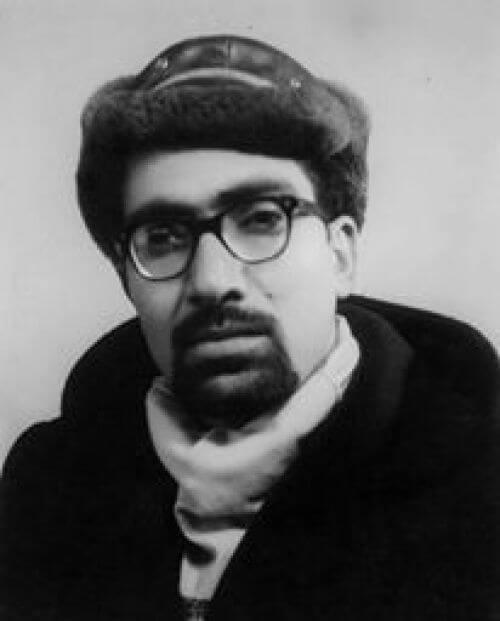
The captivating and thought-provoking art of Bansi Parimu (Jun 2, 1933, to Jul 29, 1991), has left an incredible mark on art lovers the world over. His paintings extend from Surrealism to Realist style, from Figurative to Abstract, and from Expressionism to Impressionism. He was a self-taught artist, one of the brilliant painters that the valley of Kashmir boasts of. A multi-talented artist, who defined contemporary art with his unique expression and self-exploration.
My analysis of his engrossing artworks reveals to me a profound thought process, which is appositive to life and its corollaries. A subject matter that has constantly been represented in art. His paintings have an immense efficacy to surprise the art critics as well. There is an intrinsic contextual sense attached to his artworks. Few of his engaging experimental artworks show the use of delicately woven Calligraphic and Arabesque, daubed perfectly to distinguish light and shade.
Each of his paintings speak volumes, compelling viewers to look beyond the canvas, prompting them to behold the larger abstraction.
Since he was from Kashmir, Parimu addressed the conflict as a subject in his art…
His later works, while in exile, reveal to us, his agony and experience and how it influenced his artistic journey. Since he was from Kashmir, Parimu addressed the conflict as a subject in his art, which had influenced him tremendously, and caused him to radically change his style. It was nothing short of an eye-opening, staggering experience, of the human mind on the edge. His recreation of exile episodes with harrowing scenes is heart-melting, which nevertheless tells us about the pain and his inner journey beyond an artistic comfort zone.
Parimu’s figurative art pre-constructs conceived and recollected scenes to create abstracted versions, determined by memories. The surfaces of the artist’s work testify the working method revealing strong outlines and intense colours, divulging his personal moments of introspection and more of strong emotions like loss, in later works.
Often emotional rejoinders are regarded as the mainspring to experience and understand the art, and the creation of an emotional experience has been argued as the purpose of artistic expression.
Parimu as a compelling artist not only aspired to create beautiful imagery but evoked thoughts we didn’t know were plausible.
Parimu as a compelling artist not only aspired to create beautiful imagery but evoked thoughts we didn’t know were plausible. Most of his paintings brim with symbolism and offer his audience a deep meaning. His evocative paintings, post-exile, can be regarded as hallmarks of anguish. His figurative abstracts reveal the haunting and harrowing experience of the exodus. The pain is perceptible deftly in paintings like, ‘Smeared Snow’, ‘Red Knows no Creed’ and ‘Exodus’.
Talking about his abstract artworks, those can be designated as highly innovative works as these showcase Parimu’s entire move into the realm of abstraction; immaculately balancing the contrast between dark and light of aesthetics. These brilliant works exude the traits of accurate abstraction, revealing an internal world of thoughts, struggle and ease, pain and happiness that manifests in life practices and onto his dynamic canvases.
His abstracts can be regarded as perfect ‘Fictive Illustrations’, as they reveal a reality that cannot be seen nor elucidated…
His abstracts can be regarded as perfect ‘Fictive Illustrations’, as they reveal a reality that cannot be seen nor elucidated; but whose existence can very much be predicted.
Few of his awe-inspiring artworks do disclose the Analytical Cubism; breaking and joining of geometric figures so immaculately that they almost appear three-dimensional, following Picasso and Braque styles of cubism.
Kashmir valley is an ideal place to flaunt Impressionism, the most celebrated art style, with modern boulevards and vintage architecture.
Kashmir valley is an ideal place to flaunt Impressionism, the most celebrated art style, with modern boulevards and vintage architecture. Parimu’s plethora of art styles showcases some beautiful paintings in this genre as well. But he preferred realistic pictures with precise and careful brush strokes. He subdued the colours, toned down by golden and natural shades. Therefore, his paintings reproduced places with events, probably his own personal visual perception, observing and, thereafter, revealing real hues emanating from the scene.
I won’t hesitate to confess that he was one of very few artists in India, who was gifted with the sensitivity and it can be witnessed in his philosophical subject matter; the portrayal of which can be seen and felt on his canvases without perplexity. The love for his birthplace and the agony of estrangement with it, is visible distinctly in his paintings.
Autar Mota, a renowned art historian from Kashmir writes about him, “Bansi Parimu developed his personal style on Figurative Abstraction….”
Autar Mota, a renowned art historian from Kashmir writes about him, “Bansi Parimu developed his personal style on Figurative Abstraction. His colours are often bright and warm. His geometrical forms floating in or held by his colours. I have observed that some of his Abstracts are at par with the work of reputed artists of the period on the national scene in terms of colours and styles that assimilate elements of Cubism.
“Parimu has an enormous sense of design while creating his forms and effects. For a serious lover of art, he creates something like energy fields. His work has also moved through stages of evolution.”
I can’t agree more on this.
Bansi Parimu is a cherished contemporary artist, world over.
Bansi Parimu is a cherished contemporary artist, the world over. He was born in Kashmir, India. During my informal conversation with his daughter, Jheelaf Parimu Razdan, she revealed some extraordinary facts about him. “He (Bansi Parimu) was not aware where all his paintings were getting displayed. By sheer chance, he came to know that in Copenhagen Museum his painting, along with Bikash Bhattacharjee for Triennale, was displayed. A native of Hungary sent the brochure to him, who had been introduced to him once in Srinagar.
“Same way, once in Business India a coloured page of Swaraj Paul’s son standing in his office at London for an interview showed behind him on the wall, Dad’s painting.
“Once in 1978 Mom (Jaya Parimu) happened to meet her teacher, B.K. Goswami and an IAS who was Commissioner at Tees Hazari Courts, Delhi. In his decked up huge office was Dad’s painting, which his predecessor had bought from Delhi Gallery and loved it very much.
“In North America, an art dealer had sold a painting which a Kashmiri bought and was spotted by my sister (Chandrika Parimu) at his house….”
“In North America, an art dealer had sold a painting which a Kashmiri bought and was spotted by my sister (Chandrika Parimu) at his house. And, once my late aunt was admitted in the ICU of Nanavati Hospital, the huge passage had a beautiful predominantly green painting, by Dad, hanging on the wall, which Nanavati had himself chosen for soothing effects on critical patients.
“He highly appreciated artists DN Wali and SN Bhat (famous artists from Kashmir). Later, he was in awe of Picasso and Vangogh. The potato eaters reminded him of his own poverty where for a long time he had nothing to eat except potatoes. I think he is deeply connected to the struggle of both the artists and related well to their journey and pain,” stated Jheelaf.
As is rightly quoted by John Dewey, “The work of art only has an aesthetic status when it becomes the experience of a human being.”
Yes, that’s what art is all about and that’s what Bansi Parimu, a humanitarian and environmentalist, an able sculptor and painter’s profound art tells us about.
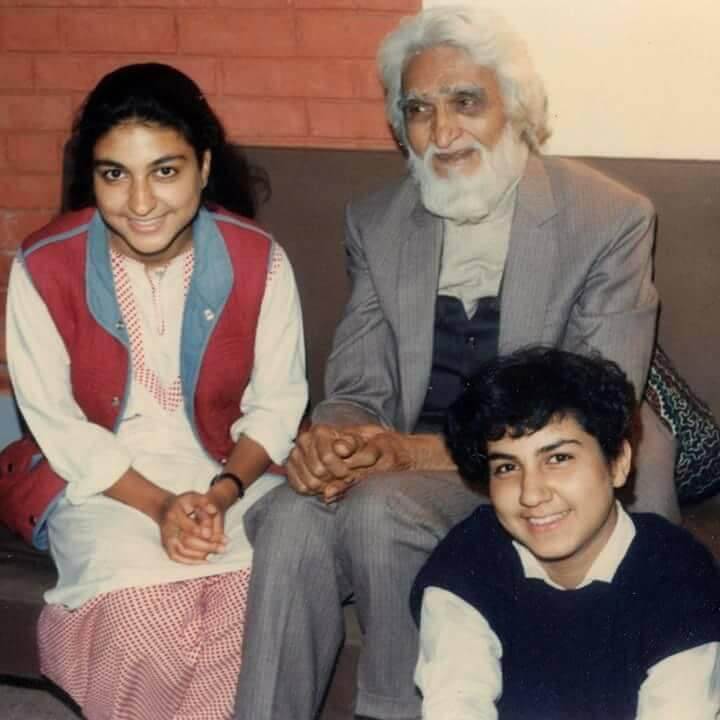
His daughters with MF Hussain 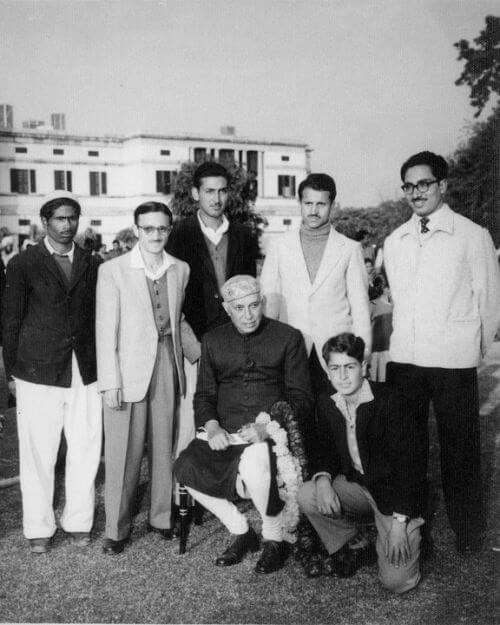
With Jawaharlal Nehru 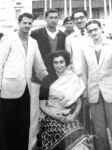
With Indira Gandhi 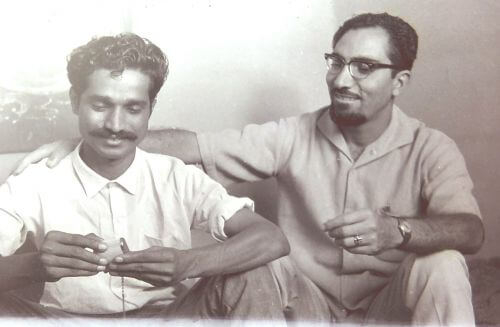
With Artist Sachida Nagdev 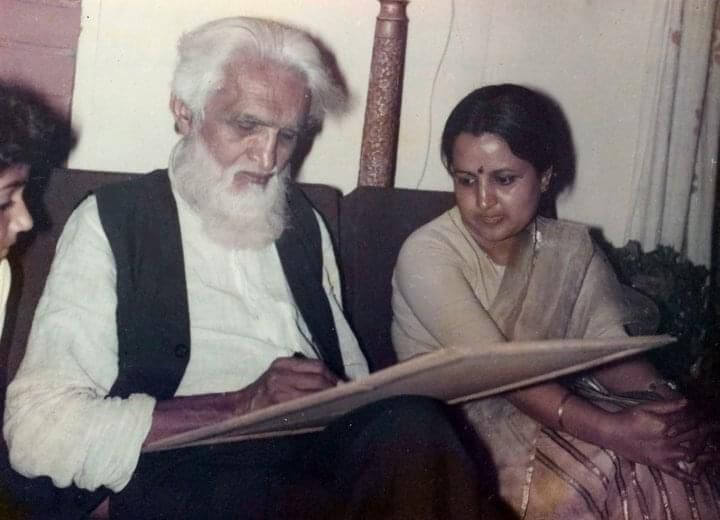
His Wife (Jaya Parimu with MF Hussain)
Reference:
2. https://en.everybodywiki.com/Bansi_Parimu
3. http://autarmota.blogspot.com/2013/07/a-1964-untitled-oil-on-canvas-by-noted.html?m=1
Bibliography:
1. Calligraphic: Visual art related to writing. A contemporary calligraphic practice can be defined as “the art of giving form to signs in an expressive, harmonious, and skilful manner.”
2. Arabesque: Surface or base decorations based on rhythmic linear patterns of scrolling and interlacing lines or foliage, often combined with other elements.
3. Figurative Abstraction: Since the arrival of abstract art, the term figurative has been used to refer to any form of modern art that retains strong references to the real world…. However, ‘abstract’ is sometimes used as a synonym for art and non-objective art, i.e. art which has no derivation from figures or objects.
4. Impressionism: A practice in painting (Started by French painters of about 1870), of depicting the natural appearances of objects by means of dabs or strokes of primary unmixed colours to simulate actual reflected light.
5. Cubism: A revolutionary approach representing reality, invented in the early 20th Century by artists Pablo Picasso and Georges Braque. They brought different views of subjects (usually objects or figures) together in the same picture, resulting in paintings that appear fragmented and abstracted.
6. Analytic Cubism: A form of Cubism analysed the use of rudimentary shapes and overlapping planes to depict the separate forms of the subjects in a painting.
Visuals sourced by the author and by Different Truths

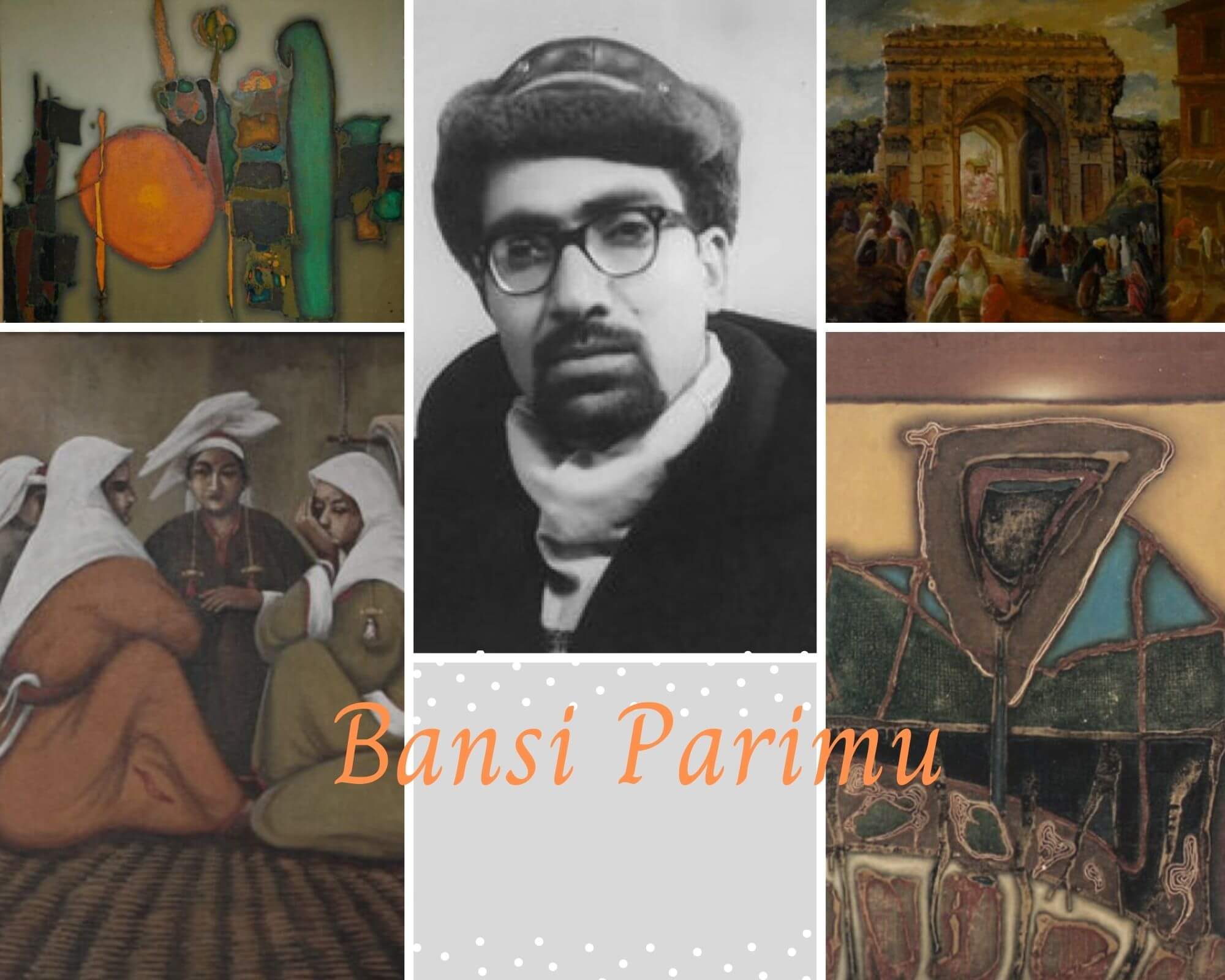
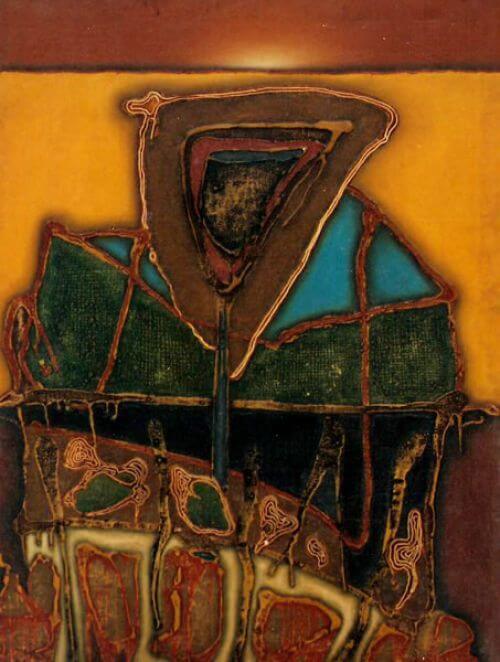
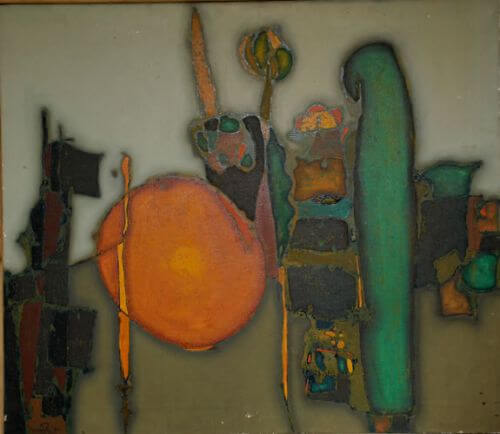
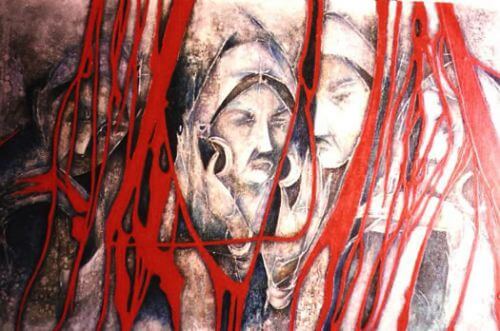
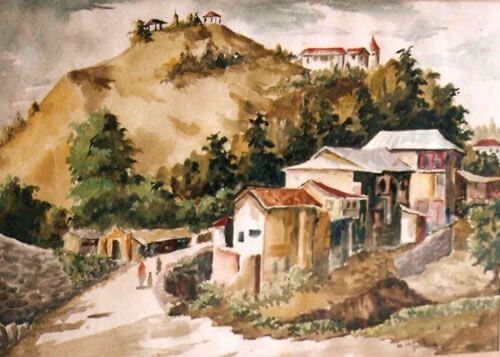
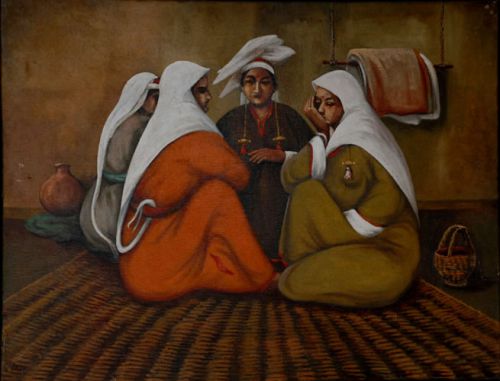
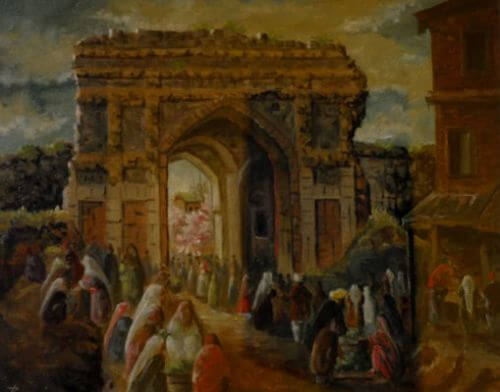


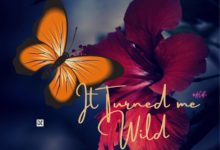

 By
By
 By
By
 By
By
 By
By